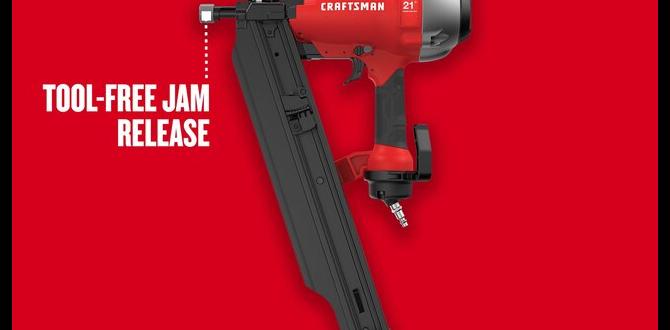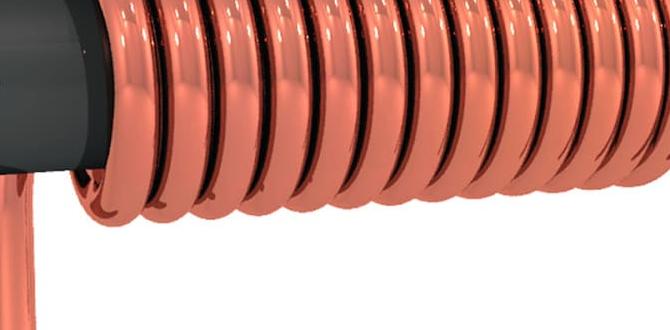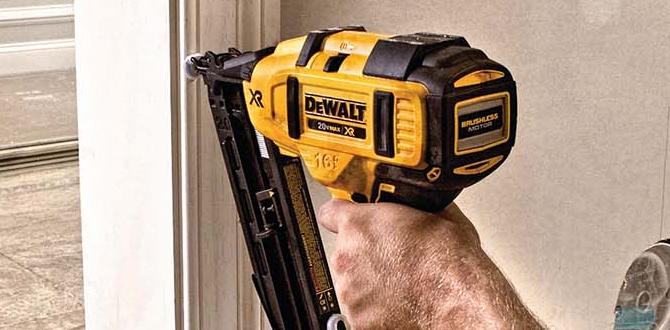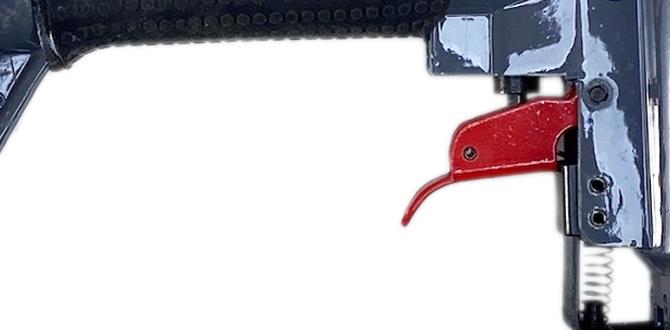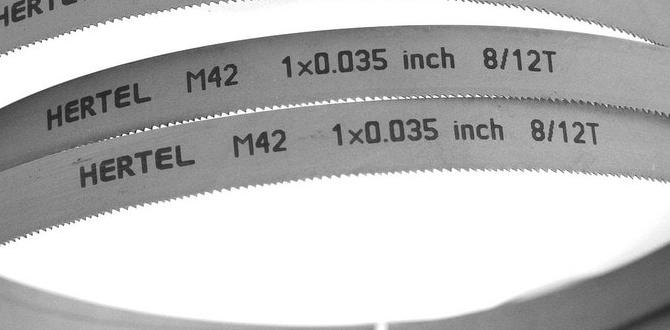Have you ever used a nailer and wondered why some nails go in easily while others jam? The secret often lies in air pressure settings. Choosing the right air pressure is key for smooth operation.
Imagine this: you’re working on a project, and your nailer suddenly stops. Frustrating, right? Understanding air pressure settings for nailers can prevent this headache. It helps you finish your work quickly and neatly.
Did you know that too high or too low pressure can cause problems? It can lead to misfires, missed nails, and wasted materials. In our guide, we will break down air pressure settings for nailers. Together, we can help you achieve better results in your projects.
Table of Contents
Air Pressure Settings For Nailers Guide: Essential Tips And Techniques

Air Pressure Settings for Nailers Guide
Understanding air pressure settings for nailers is essential for perfect nailing. Proper settings ensure that nails go in straight and hold strong. Did you know that too much pressure can damage your materials? The guide covers the ideal PSI range for different nailers. It also explains how to adjust settings based on the type of project. Knowing these tricks can save time and prevent costly mistakes. Get ready to nail it right!
Why Air Pressure Matters
Explanation of how air pressure affects nail performance. Impact of incorrect pressure settings on tools and materials.
Air pressure can make or break your nailing game. Too low, and your nails won’t go in all the way—kind of like trying to staple jelly! Too high, and you risk splitting wood or even damaging your tool. The sweet spot is key! Proper settings keep your nails sturdy and your material happy. Remember, incorrect pressure not only wastes materials but can also lead to repairs that are more expensive than your last splurge on pizza.
| Pressure Level | Effect |
|---|---|
| Too Low | Nails under-inserted, weak holds |
| Just Right | Nails perfectly sunk, solid grip |
| Too High | Wood splitting, tool damage |
Recommended Air Pressure Settings by Nail Gun Type
Suggested pressure ranges for framing nailers. Suggested pressure ranges for finish and brad nailers. Suggested pressure ranges for roofing nailers.
Choosing the right air pressure for your nail gun is key! For framing nailers, aim for 80-100 PSI. This gives strong power for those big jobs. If you’re using finish or brad nailers, a gentler 70-90 PSI setting works best; it’s like giving your wood a soft hug! Roofing nailers should be around 70-100 PSI, ensuring those shingles stay put without flying away. Remember, too much air can make a nail mad and cause misfires!
| Nailer Type | Suggested Pressure (PSI) |
|---|---|
| Framing Nailers | 80-100 PSI |
| Finish & Brad Nailers | 70-90 PSI |
| Roofing Nailers | 70-100 PSI |
How to Adjust Air Pressure Settings
Stepbystep guide on adjusting the pressure on a compressor and nailer combination. Tips for finetuning settings based on materials and job requirements.
To adjust your air pressure settings for nailers, follow these steps. First, turn off the compressor. Check the pressure gauge. Adjust the regulator to your desired PSI. For softwood, you may set it around 70-90 PSI and for hardwood, try 90-110 PSI instead. Always test on scrap material to see if you need changes. Fine-tuning is important!
What should I consider for different materials?
Each material needs specific settings. For example, softer materials need lower pressure for better control. On the other hand, harder materials may require more power. Always remember to adjust based on the job!
- Softwood: 70-90 PSI
- Hardwood: 90-110 PSI
- Thin materials: Lower than 70 PSI
- Medium thickness: Around 80-90 PSI
Adjusting your nailer’s air pressure may seem tricky, but it gets easier with practice. Checking your settings can help avoid mistakes. Regular use will make you an expert!
Common Air Pressure Issues and Troubleshooting
Identifying signs of too high or too low pressure. Troubleshooting techniques for common nailer problems related to air pressure.
Have you ever noticed your nailer is acting a bit cranky? Signs of air pressure issues include nails that don’t go in all the way or, on the flip side, nails flying out like tiny rockets! Test your pressure with a gauge and look for leaks like a detective on a mission.
Here’s a helpful guide for common problems:
| Problem | Possible Cause | Troubleshooting Step |
|---|---|---|
| Nails not driving in | Low air pressure | Increase pressure |
| Nails jamming | High air pressure | Decrease pressure |
| Nails flying out | Pressure too high | Adjust pressure |
So don’t let nail problems drive you crazy. Keep your pressure just right and nail on!
Safety Precautions When Using Nailers
Essential safety tips for working with pneumatic tools. Importance of maintaining proper pressure for safe operation.
Using nailers can be as fun as a game of whack-a-mole, but safety should always come first! Always wear eye protection to keep those pesky flying nails away from your peepers. Keep your hands clear of the nailer’s path, or you might end up with a “hole-y” experience you didn’t sign up for. Maintaining the right air pressure is key for smooth operation. If the pressure is too high, you can turn those nails into little missiles! Aim for 90-120 PSI for most jobs. Here’s a quick safety checklist:
| Safety Tip | Description |
|---|---|
| Wear protective gear | Goggles and gloves are a must! |
| Check air pressure | Ensure pressure is within safe limits. |
| Keep hands away | No “high-fives” when firing! |
| Inspect tools regularly | Check for damage and proper function. |
Remember, safety first means fewer trips to the doctor!
Best Practices for Maintaining Your Nail Gun
Routine maintenance tips to ensure optimal performance. Importance of keeping air filters and hoses clean and in good condition.
To keep your nail gun firing like a champ, regular maintenance is key. Check the air filters often. A dirty filter is like a clogged nose—nobody can breathe right! Also, inspect your hoses for any cracks or leaks. A frayed hose is not only a problem but also a recipe for disaster. Remember, clean tools work better and last longer. If you give your nail gun some love, it will repay you with happy projects!
| Maintenance Tip | Frequency |
|---|---|
| Inspect Air Filter | Every 2 weeks |
| Check Hoses | Monthly |
| Lubricate Moving Parts | Every 3 months |
Additional Resources for Nail Gun Users
Recommended articles, videos, and forums for further learning. Suggested tools and accessories that complement nailers.
To become a nail gun superstar, it’s wise to check out helpful resources. Dive into articles, videos, and forums that share expert tips and tricks. You can learn how to avoid nail gun misfires—trust me, no one likes a rogue nail! Don’t forget about the must-have tools and accessories that make your nailer even better. Here’s a quick list:
| Resource Type | Description |
|---|---|
| Articles | Read about nail gun safety and usage. |
| Videos | Watch tutorials that show nail gun settings in action. |
| Forums | Join discussions with fellow nail gun users. |
| Tools | Consider purchasing an air compressor for better performance. |
With these resources, you’re ready to tackle any project like a pro (or at least a very confident novice)! Happy nailing!
Conclusion
In conclusion, understanding air pressure settings for nailers is essential for great results. Use the right pressure to avoid problems like misfires or damage. Remember to check your nailer’s manual for specific recommendations. Now that you know the basics, practice adjusting settings on your nailer. Keep exploring guides for more tips! Happy nailing!
FAQs
Sure! Here Are Five Related Questions On The Topic Of Air Pressure Settings For Nailers:
To set the air pressure for a nailer, you first need to know what type of nailer you are using. Each nailer has a pressure range it works best in. Check the manual to find the correct numbers. You want to set it high enough to drive the nails in but not so high that it damages the wood. Always test it on scrap wood first to make sure it works well!
Sure! Please provide the question you would like me to answer.
What Is The Recommended Air Pressure Setting For Different Types Of Nailers (E.G., Finish Nailers, Brad Nailers, Framing Nailers)?
For nail guns, the air pressure setting is important. Finish nailers usually need about 70 to 100 PSI (pounds per square inch). Brad nailers work well at 60 to 80 PSI. Framing nailers need more power, around 80 to 120 PSI. Always check the manual for your nailer for the best settings!
How Do I Adjust The Air Pressure On My Nail Gun To Prevent Misfires And Ensure Proper Nail Penetration?
To adjust the air pressure on your nail gun, first find the air regulator on the gun. Turn the knob to change the pressure. Make sure the pressure is between 70 and 120 PSI (pounds per square inch). Test the nail gun on a scrap piece of wood. If it still misfires, try lowering the pressure a little more.
What Are The Potential Risks Of Using Incorrect Air Pressure Settings With Pneumatic Nailers?
Using the wrong air pressure with pneumatic nailers can be dangerous. If the pressure is too high, the nails can shoot out too fast. This can cause injuries to you or others nearby. If the pressure is too low, the nails might not go in all the way. This can make things weak or fall apart later. Always check your air pressure to stay safe!
How Can Environmental Factors, Such As Temperature And Humidity, Affect The Air Pressure Settings For Nailers?
Temperature and humidity can change how nailers work. When it’s hot, air gets lighter, so you might need less pressure. If it’s humid, moisture can make air feel heavier, needing more pressure. Always check the weather before using your nailer to get the best results!
Are There Specific Tips For Maintaining Consistent Air Pressure In A Nail Gun During Prolonged Use?
To keep air pressure steady in a nail gun, check the air compressor often. Make sure the hose isn’t bent or pinched. Keep the nail gun clean to help it work better. You can also adjust the pressure on the compressor if needed. Lastly, fill the air tank when it gets low to keep going strong.
